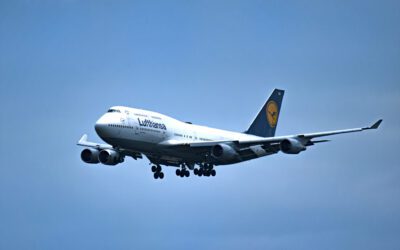When it comes to air travel, almost everyone prefers flying nonstop. However, between looking for the best price, chasing frequent flier miles, or simply flying between two smaller or non-hub cities, nonstops may not be an affordable alternative.
In most cases, except for those who REALLY like to stretch their legs, or maybe want a break to smoke a cigarette, the next best option is what airlines call a “direct” flight. Such flights make a stop, but there is no need to deplane, and no worry about missing a connection. Direct flights also generally have a single flight number from beginning to end.
One might think that anything with a single flight number is direct. But, one would think wrong. Beware of hidden connections.
The letters to beware are “CHG” which means, “Change of aircraft.”
For example, United flight 333, which today was scheduled at 1:40 p.m. from Los Angeles to Boston, arriving at 12:45 a.m. via San Francisco. Except that it was two different planes, one from Los Angeles to San Francisco, then a different plane from San Francisco to Boston. This is a hidden connection. Many passengers don’t even know these hidden connections exist.
Here’s the way it shows in our GDS computer: UA 333 LAXBOS 140P 1245A+CHG 81
The first half of the flight was scheduled to arrive at 3:09 p.m. into SFO. Then the next leg was supposed to depart for Boston at 4 p.m. Except the aircraft arrived at the gate at 3:58 pm. On many days, this would have meant travelers who never realized there was a chance of missing a connection to either be stuck overnight or put on a red-eye.
Today, those Los Angeles originating (and connecting) passengers got lucky. The San Francisco originating passengers less so. (As it turns out, a delayed client on the second leg informed me there were 63 “connecting passengers.” So the plane waited for them and departed 32 minutes late.) One has to wonder how many of the LA-Boston direct flight passengers thought they weren’t connecting at all.
For travelers hoping to avoid missing a hidden connection on a not-so-direct flight, here are four quick tips:
- Look at availability displays carefully – the “CHG” is never hidden, though they come at the end of the display. Curiously enough, Southwest Airlines, which sells 2-stop flights regularly, is one airline that doesn’t change planes for the same flight number.
- Check the amount of time between flights. It should be no less than you are comfortable having between any other connecting flights.
- Take the extra step of checking the on-time performance of each segment from last month. Airlines do have to post such data along with the availability of the flights. In the above example, the “8” after the CHG refers to the overall flight being on time over 80 percent of the time. But flight 333 from LAX to SFO was only on time 70 percent of the time. (The “1” at the end means one stop.)
- Use your knowledge, or your travel agent’s knowledge. For example, living in Northern California I know flights between San Francisco and Los Angeles are often delayed. But other city pairs are prone to delays, including many East Coast flights. In general, short flights are lower priority for airlines, and an aircraft making a lot of turnarounds in a day has more chances to be delayed than one flying cross-country.
In some cases, a different originating flight is available, and then, besides more connecting time, there’s a potential backup if the ticketed flight is late. While it may seem counterintuitive to book yourself on two different flights when one flight looks available, it could save your trip.
The bottom line: When airlines sell you a direct flight, check to make sure there is no change of planes, no hidden connections. If there are, plan accordingly. Buyer beware.
Janice Hough is a California-based travel agent a travel blogger and a part-time comedy writer. A frequent flier herself, she’s been doing battle with airlines, hotels, and other travel companies for over three decades. Besides writing for Travelers United, Janice has a humor blog at Leftcoastsportsbabe.com (Warning, the political and sports humor therein does not represent the views of anyone but herself.)



